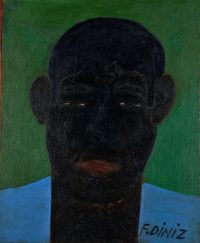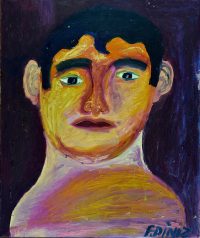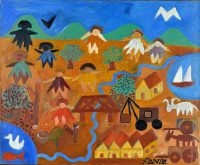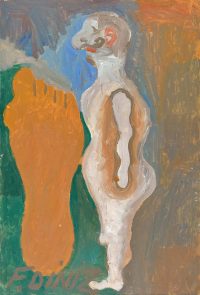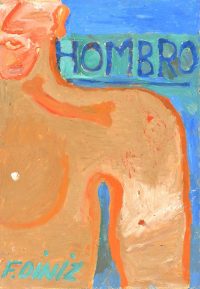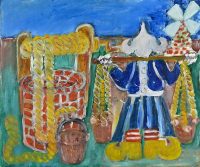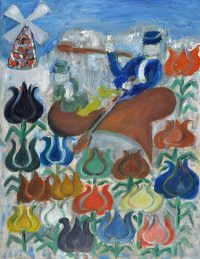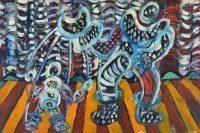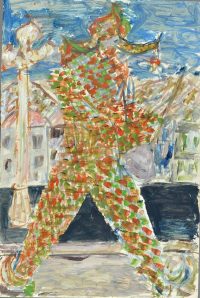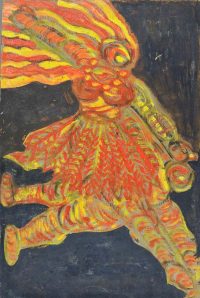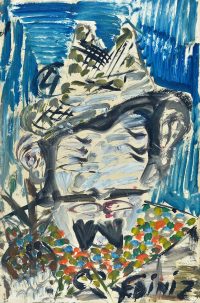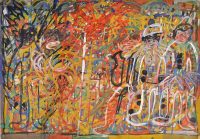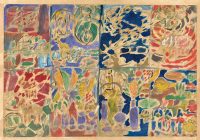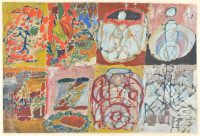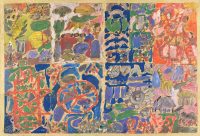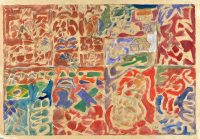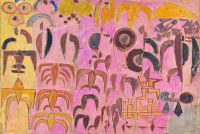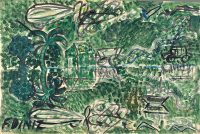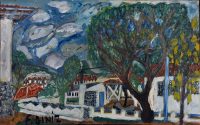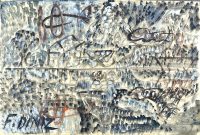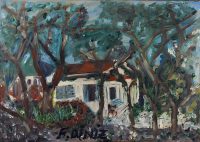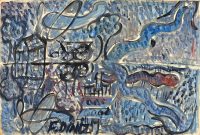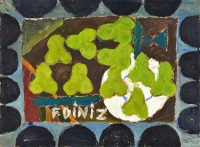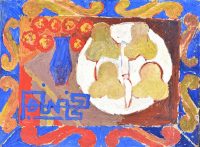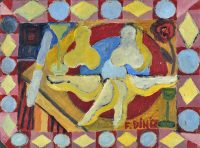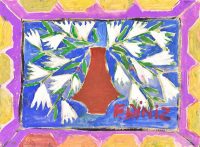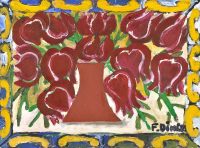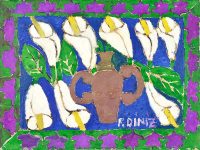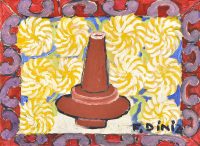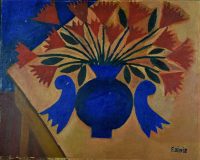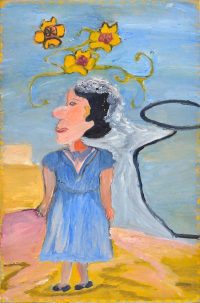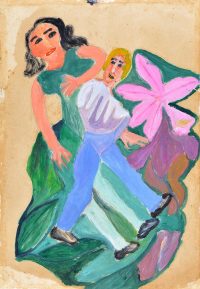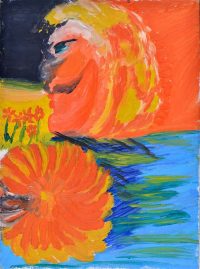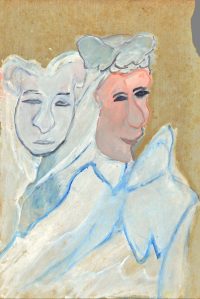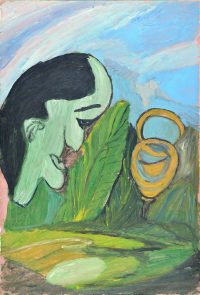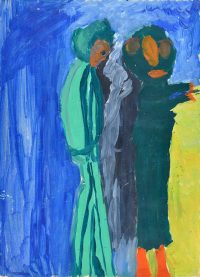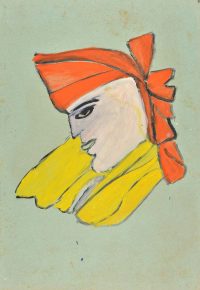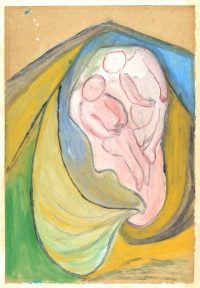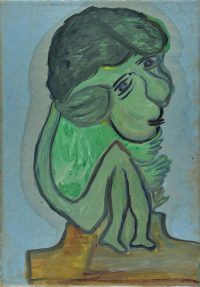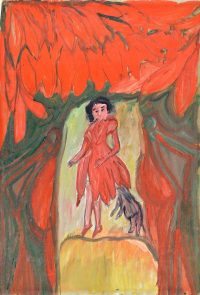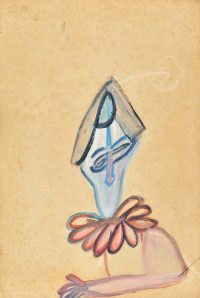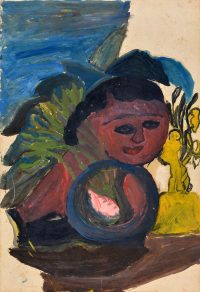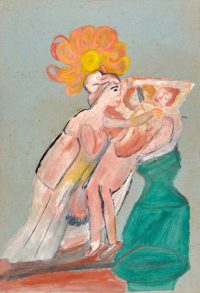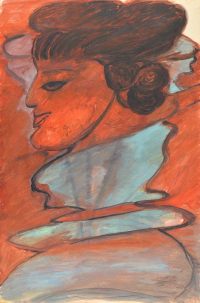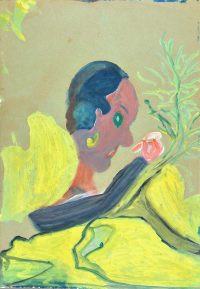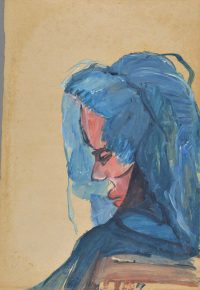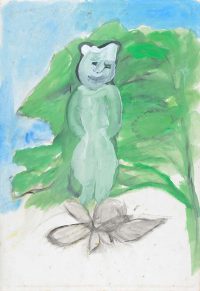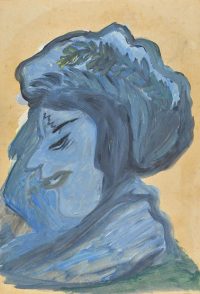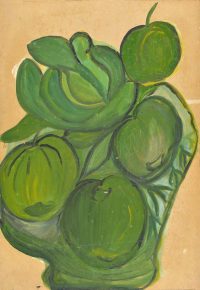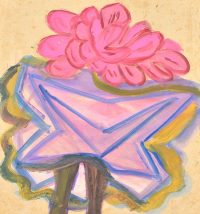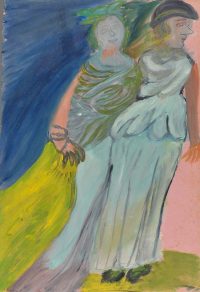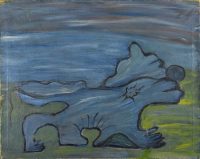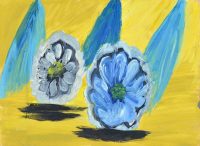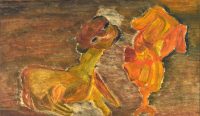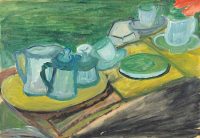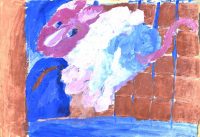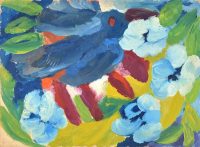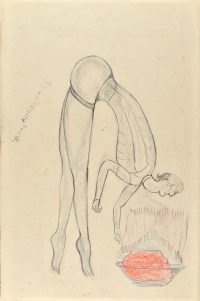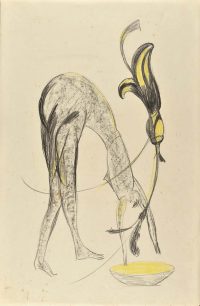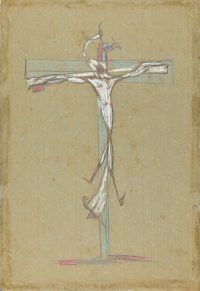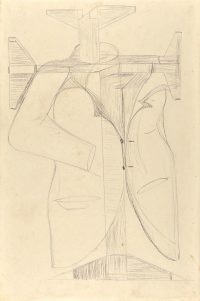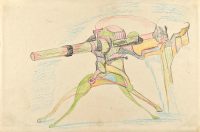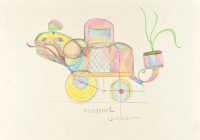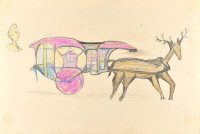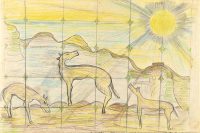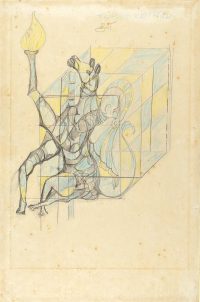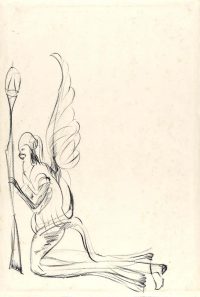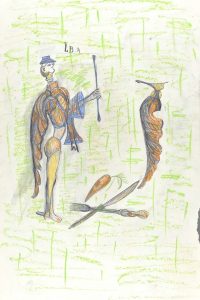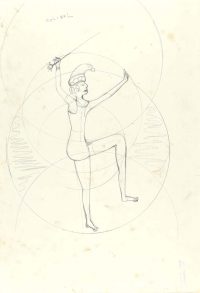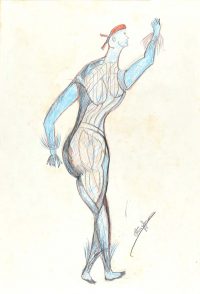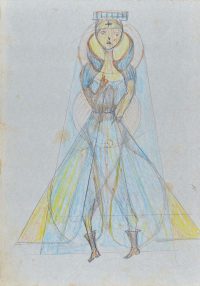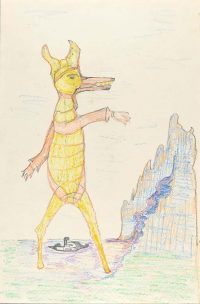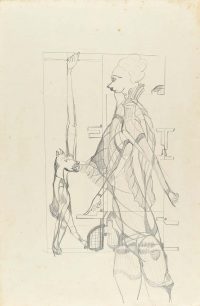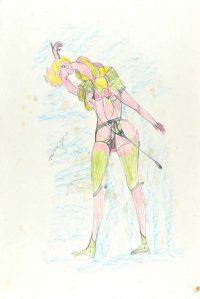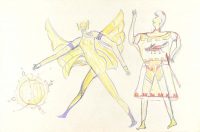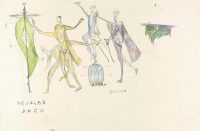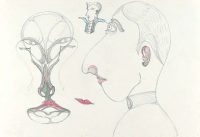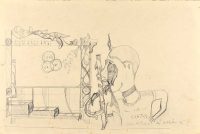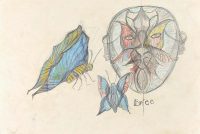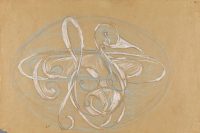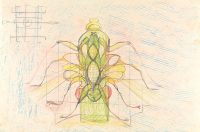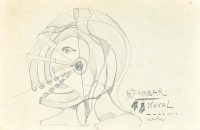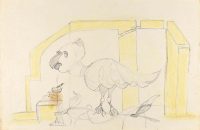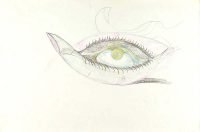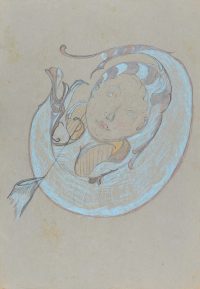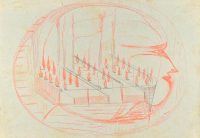Virtual Exhibition
3 Artists
from Engenho
de Dentro
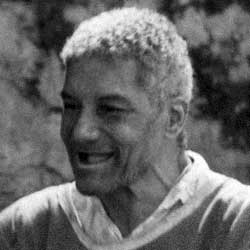
Fernando Diniz
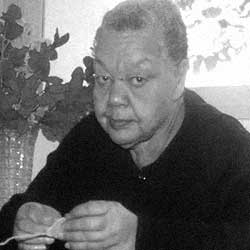
Adelina Gomes
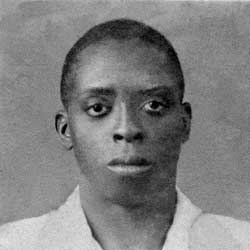
Octávio Ignácio
In its nearly seventy years of activities, the Museum of Images from the Unconscious has periodically presented part of its collection to the visiting public, in accordance with its possibilities. Recently, thanks to the brave actions of the Society of Friends of the Museum of Images from the Unconscious, the works received a state-of-the-art museum treatment, thanks to which new discoveries were made and many memories revisited. This further accomplishes the visionary mission left behind by its founder.
Although many maintenance activities are continuing, visits to the museum galleries have been interrupted due to the Covid-19 pandemic, which has been plaguing the entire planet. In this period the work has turned inward, to deepen our view on this heritage, finding new ways of exhibiting and sharing, if not all, at least part of these works. And so the idea arose to organize the institution’s first virtual exhibition − 3 Artists from Engenho de Dentro − with a selection of works that the general audience doesn’t yet know, and whose format seeks to acknowledge the strength of each of the works.
Because of the gigantic volume of the collection, the exhibition’s curatorial team of three thought it a good idea that the pre-selection of works was made by museum veterans Eurípedes Gomes da Cruz Júnior and Luiz Carlos Mello, who, besides having spent time with the selected artists, are able to recover the memories contained in the works. The artists − Adelina Gomes, Fernando Diniz and Octávio Ignácio − all have a vast artistic output that in a certain way recounts their trajectories, a characteristic feature of the result of the work created and developed by Dr. Nise da Silveira.
Therefore we cannot separate the figure of the creators from their respective artistic practice, because the process of creating these works and their codes are directly related to the life story of each of them. This exhibition provides the viewer with an immersion in three distinct universes that move between feminine and masculine, between systems and the organization of images, between saturated colours and lines.
It is impossible not to be moved by such beauty!
Marco Antonio Teobaldo
Curator and member of the Society of Friends of the Museum of Images from the Unconscious
Fernando Diniz
“I didn’t have any toys as a child. So I dreamed about interplanetary toys every day. I only had the games that some children play with each other. The power to dream about what you want – except to dream about what is of the earth.”
Biography
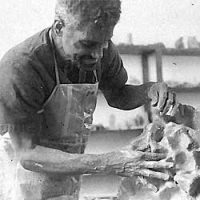 Fernando Diniz was born in Aratu, Bahia, in 1918. At age 4, he moved to Rio de Janeiro with his mother, who was an excellent seamstress. They lived in tenement houses and he used to accompany his mother when she went to work in the houses of the rich and the wealthy. Ever since he was a boy, Fernando dreamed of being an engineer. He was intelligent and always the first student of his class. He reached the first year of high school, but then abandoned his studies. In July 1944 he was arrested and taken to the judicial mental hospital, the charge was that he had been swimming naked at Copacabana beach. He started to attend the Occupational Therapy Section in 1949. When he arrived at the studio, he wouldn’t raise his head and his low voice could barely be understood. When asked why his paintings are so beautiful, he responded: “It’s not me, it’s the paint”. In his work, Fernando mixes figurative and abstract forms, from the simplest to the most complex compositional structures.
Fernando Diniz was born in Aratu, Bahia, in 1918. At age 4, he moved to Rio de Janeiro with his mother, who was an excellent seamstress. They lived in tenement houses and he used to accompany his mother when she went to work in the houses of the rich and the wealthy. Ever since he was a boy, Fernando dreamed of being an engineer. He was intelligent and always the first student of his class. He reached the first year of high school, but then abandoned his studies. In July 1944 he was arrested and taken to the judicial mental hospital, the charge was that he had been swimming naked at Copacabana beach. He started to attend the Occupational Therapy Section in 1949. When he arrived at the studio, he wouldn’t raise his head and his low voice could barely be understood. When asked why his paintings are so beautiful, he responded: “It’s not me, it’s the paint”. In his work, Fernando mixes figurative and abstract forms, from the simplest to the most complex compositional structures.
Fernando is an eternal learner. His eagerness for knowledge led him to think of the hospital as a university, and despite his long seclusion, the amount of information he accumulated is impressive. His passion for books kept him constantly up to date with scientific discoveries and events.
The graphic result of all this activity is a kaleidoscope of images, sometimes in succession, sometimes superimposed, dynamic and colourful. From space to time, from the inorganic to the organic, from the geometric to the figurative, and vice versa, Fernando was creating his universe.
He built several sundials using clay, enormous structures of articulated stars and moons. After he participated in the Leon Hirszman film Em Busca do Espaço Cotidiano (In Search of Everyday Space), he painted and drew a series inspired by cinema, in which he used zoom movements and other elements of cinematographic language. This interest led to the award-winning animation Estrela de Oito Pontas (Eight Pointed-Star), for which he made over 40.000 drawings under the guidance of filmmaker Marcos Magalhães.
According to Gladys Schincariol, “his journey through this world was a true life lesson and his immense legacy is still an open book – ‘the painter is like a book that has no end.’ Fernando was a unique artist: ‘The artist is almost a miracle. The artist was born an artist, he likes to express himself, to show beauty…’, he would say.” Fernando died in 1999, leaving behind an estimated legacy of 30 thousand works: canvases, drawings, tapestries, sculptures and woodcuts.
About the Work
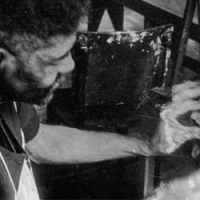 The painting of Fernando Diniz is stunning. There is no other adjective that better describes the vigour of his images, that shine with the precision of someone who constructs a shelter to protect themselves. It is this comforting involvement that the work of Fernando Diniz deals with. There is luxury. There is stillness. There is voluptuousness in his images. It is as if he chased a bourgeois ideal that he never had access to, but from which he took the pulse that feeds his imagination. Left out, imprisoned, through his art he returns a deep understanding and admiration for that which he was never given to have.
The painting of Fernando Diniz is stunning. There is no other adjective that better describes the vigour of his images, that shine with the precision of someone who constructs a shelter to protect themselves. It is this comforting involvement that the work of Fernando Diniz deals with. There is luxury. There is stillness. There is voluptuousness in his images. It is as if he chased a bourgeois ideal that he never had access to, but from which he took the pulse that feeds his imagination. Left out, imprisoned, through his art he returns a deep understanding and admiration for that which he was never given to have.
His painting is the expression of his desire to penetrate this universe.
Fernando Diniz’s universe is densely populated, because it is divided into a thousand different facets. Like a stonecutter, by making angled cuts he reveals different brilliances of his visual imagination.
When I asked him which of the series in the exhibition he liked best, he replied that each painting is like the days, each one has a different saint. I understood then that it wasn’t possible to compare them. Each day has a saint. Each saint has their specificity; just like his work.
When I asked him which of the series in the exhibition he liked best, he replied that each painting is like the days, each one has a different saint. I understood then that it wasn’t possible to compare them. Each day has a saint. Each saint has their specificity; just like his work. We can move through it as if it was an archive. It is a fantastic inventory of forms. It is an encyclopedia. Of the house, it focuses on the living room and captures every detail (chandeliers, sofa, rugs, piano, sheet music, curtains, fruit bowls). There are also still lifes, dozens of different fruits and flowers, as if he catalogued them one by one. Of the series of vehicles, there is air, sea and land transport. Musical instruments, an endless universe of stars. In short, everything that fits in the world, fits into Fernando’s work.
His painting is magical and opulent. It has the power of the senses that open themselves to perceive, receive and invent on paper the textures, colours, forms and sensuality of the visual universe.
Fernando is one of the main representatives of this unique ‘renaissance’ of Brazilian art, which Dr. Nise da Silveira knew how to bring together and allow to unfold so delicately and determinedly at the Psychiatric Hospital in Engenho de Dentro.
His work is moving. It is the visual testimony of one of our greatest artists. It is the demonstration of a direct, precise and precious visual creation of something that is unnamable and incomparable, which is the strength and mystery of the great Fernando Diniz.
Márcio Doctors
Curator and art critic.
(Excerpt from the exhibition catalogue Mostra do Redescobrimento – Imagens do Inconsciente, Fundação Bienal de São Paulo, Associação Brasil 500 Anos Artes Visuais, 2000).
Adelina Gomes
“ADELINA DIDN’T SPEAK AT ALL. I WOULD WALK PAST HER AND SAY:
— GOOD MORNING, ADELINA.
SHE NEVER REPLIED TO ME. YEARS PASSED BY. ONE DAY, I WALKED BY AND REPEATED:
— GOOD MORNING, ADELINA.
AND CONTINUED MY WAY DOWN THE HOSPITAL CORRIDOR. THE NEXT THING, A SOCIAL WORKER RAN OVER, CAUGHT UP WITH ME AND SAID:
— DO YOU KNOW WHAT HAPPENED? WHEN YOU WALKED BY, SHORTLY AFTER, SHE BLEW A KISS AT YOU.
I WANTED TO TURN AROUND, BUT I KEPT MYSELF FROM DOING SO. THE NEXT DAY, INSTEAD OF SAYING “GOOD MORNING, ADELINA”, I HELD OUT MY CHEEK. SHE KISSED ME. A RELATIONSHIP WAS CREATED.”
Nise da Silveira
Biography
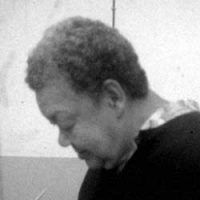 Adelina was a daughter of peasants, born into a poor family in 1916 in the city of Campos, Rio de Janeiro state. She went to primary school and learned various manual crafts at a vocational school. She was shy and without vanity, obedient to her parents, especially attached to her mother. At 18, she fell in love with a man whom her family didn’t accept. She became increasingly withdrawn and aggressive, which led her family to hospitalize her. When she began to attend the painting studio, she had no difficulty in taking up painting.
Adelina was a daughter of peasants, born into a poor family in 1916 in the city of Campos, Rio de Janeiro state. She went to primary school and learned various manual crafts at a vocational school. She was shy and without vanity, obedient to her parents, especially attached to her mother. At 18, she fell in love with a man whom her family didn’t accept. She became increasingly withdrawn and aggressive, which led her family to hospitalize her. When she began to attend the painting studio, she had no difficulty in taking up painting.
According to the testimony of artist Almir Mavignier, she was said to be “aggressive and dangerous”, a description which advised against her presence in the studio. “However, I was interested in the dolls she had made in the hospital and went to pick her up on a rainy day with my umbrella. This attention, so normal in those circumstances, must have contributed to gaining her trust.”
At first, she dedicated herself to working with clay, sculpting figures that impress us with their likeness to images from the Neolithic period. They are robust, majestic women. According to Nise da Silveira, “it was in clay, appropriately the most primordial of work materials, that Adelina sculpted her amazing characters, emerging from the deepest strata of the unconscious. (…) This was the occupation that she chose and that absorbed her for long hours.”
In her painting we can follow the incredible plant metamorphoses that she experienced, which brought about the famous study by Dr. Nise da Silveira, who compared her work to the Greek myth of Daphne. Adelina also devoted herself to making paper flowers and works with crochet. From then on she became a docile and friendly person, always focused on her activities, producing about 17.500 works with an intense expressive force. Adelina passed away in 1984.
Her artistic output became the subject of exhibitions, documentaries and publications.
About the Work
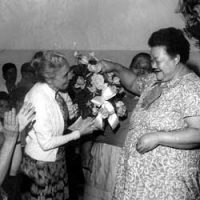 I got to know Adelina Gomes’ work through cinema – to be exact, through the film Imagens do Inconsciente (Images from the Unconscious), a masterpiece by Leon Hirszman, filmed between 1983 and 1986 at the Pedro II Psychiatric Centre(*) and released in 1988, after his death. In this trilogy by Hirszman, the episode about the artist is the second one and its title refers to the analyses of Nise da Silveira: “In the kingdom of mothers” – by which the researcher associated her practice with the relations she had with female figures during her lifetime.
I got to know Adelina Gomes’ work through cinema – to be exact, through the film Imagens do Inconsciente (Images from the Unconscious), a masterpiece by Leon Hirszman, filmed between 1983 and 1986 at the Pedro II Psychiatric Centre(*) and released in 1988, after his death. In this trilogy by Hirszman, the episode about the artist is the second one and its title refers to the analyses of Nise da Silveira: “In the kingdom of mothers” – by which the researcher associated her practice with the relations she had with female figures during her lifetime.
There is a subtlety at the start of the film that speaks to the artist’s production: in the first sequence we see Adelina walking through a wing of the hospital, holding a bag. It cuts to her exiting the hospital gate and in the next scene, we see her picking flowers. At the end, before the narration of Nise’s text, there is another cut to the artist inside the studio at the hospital. Adelina, holding the same bag, leaves the frame and the camera focuses on a flower in the room – one of those she picked. In this very subtle way, Hirszman suggests a merging of the artist’s body and the flower.
Some of the paintings on display in this exhibition of the Museu de Imagens do Inconsciente point in this direction – the obliteration of differences between that which is seen as human and that which could be seen as vegetative. This becomes noticeable in the way in which Adelina’s images tend towards a desire to represent the physicality of the body, and more precisely, the importance of the face. Whether they are large and in profile, or part of a more theatrical composition, her paintings refer to the body as a central element – even when integrated with images that are at times in dialogue with what we conventionally call landscape or still life.
It’s the way in which the artist paints the body, however, that will give it this quality of metamorphosis: it’s hard to look at this series of images and not see the intelligence with which she applied and experimented with colour. Even though the usual greens and blues predominate in most of these works, there is a consistency in the use of strong colours that brings about a disconcerting contrast through the reds, yellows, oranges and pinks. Adelina’s painting and research are permeated by the suggestion of movement created by this chromatism.
I’d like to consider this artist’s practice and her famous phrase, quoted in this documentary by Nise da Silveira – “I wanted to be a flower” – in a broad and transhistorical way: so that the metamorphoses of Adelina intersect as much with those writings by Ovid as with the transformations suggested by Hayao Miyazaki. Suggesting a conversation with more recent art production in Brazil, may the echoes of the search for the ‘body-flower’ be heard in the poetics of Castiel Vitorino Brasileiro and Tadáskia.
Let’s not get stuck in one form – let’s give in to the movement and the uncertainty of transformations, just as Adelina teaches us to this day.
Raphael Fonseca
Researcher working at the intersection of curating, art history, criticism and education.
(*) Name of the hospital located in the city of Rio de Janeiro where Dr. Nise da Silveira founded the studios for expressive activities.
Octávio Ignácio
“Schizophrenia is a disease that makes the heart suffer more than the other organs. Then it gets bigger and bursts.”
Biography
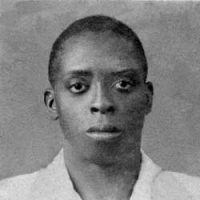 Octávio was born in 1916 in the state of Minas Gerais. He was a metal worker and a firefighter. In 1966 he started to attend the painting studio of the Museu de Imagens do Inconsciente as an outpatient. He was a very intelligent person, who developed thoughts and ideas with a great power of synthesis. He carried out his work with intensity, often standing up.
Octávio was born in 1916 in the state of Minas Gerais. He was a metal worker and a firefighter. In 1966 he started to attend the painting studio of the Museu de Imagens do Inconsciente as an outpatient. He was a very intelligent person, who developed thoughts and ideas with a great power of synthesis. He carried out his work with intensity, often standing up.
He preferred to make drawings with crayons about the most diverse themes, ranging from animal symbolism to images of archaic rituals, from images that evoke Dionysus, metamorphoses, fantastical beings, to images that have their parallel in alchemical symbolism.
Octávio was an affectionate person and dedicated part of his time to helping children at the Children’s Neuropsychiatry Hospital. This concern was probably motivated by the difficult childhood he had.
His testimonies surprised everyone. Nise said that there were lessons in them for us to learn, as in this phrase: “Schizophrenia is a disease that makes the heart suffer more than the other organs. Then it gets bigger and bursts.”
He produced more than 6.240 works and participated in exhibitions in Brazil and abroad. In 1978 he produced the revolutionary book Os Cavalos de Octávio Ignácio (The Horses of Octávio Ignácio), with the Society of Friends of the Museu de Imagens do Inconsciente and the support of Funarte, including images of his works and texts he wrote.
He visited the painting studio regularly until his death in 1980.
About the Work
I became acquainted with the Museu de Imagens do Inconsciente in the mid-1970s, when my inseparable friend and brother Luiz Carlos Mello took me there. He would later become the main collaborator of Dr. Nise da Silveira, the founder of the museum. In those first months, being a young music student, I recovered an old harmonium that was there. I started playing long improvisations during the activities in the painting studio. The atmosphere of concentration and the energy surrounding that place were incredible! On one of these mornings Octávio Ignácio approached me and gave me a piece of advice: “Be very careful with the music. It is very good, but many priests have already gone crazy because of it.”
Octávio was an unusual presence in the studio: the other attendees were interned there, dressed in uniforms and they complied with the sad routine of the hospice – infirmary, patio, studio, infirmary… He was a participant from outside, came from his home and wore ordinary clothes.
There were those who were constantly immersed in the deep and tomb-like silence brought on by long years of being interned in such a sad place, while Octávio exuded joy and was almost always extroverted, jovial and playful.
Today I clearly see the symbolic power this fact had at that time. After 12 hospitalizations, he began to draw and paint and was never again readmitted. Octávio represented the future, the transition between that old and cruel system of traditional psychiatry and the revolution that Nise had initiated, based on affection and freedom: today, everyone in the studios of the Museu de Imagens do Inconsciente is free from asylum prison!
This bustling, creative and cheerful character is reflected in his creative work. Octávio’s drawings make up almost his entire work; paintings are rare. He prefers lines, which can only be drawn with graphite pencil, with which he creates magnificent sketches, or coloured ones, in which the colours are always intrinsically linked to the meaning he gives to the forms that spring from his pencils. Many of these drawings resemble rendered structures, which are now so common in the digital world. Octávio usually restricts himself to the essential. Empty spaces on the support don’t bother him, for him there is no horror vacui: on the contrary, he makes use of transparency to show unusual details, not always pleasant: jaws, terrible faces that hide under the skin of the face, multiple views of bodies and metamorphoses. For Octávio, everything is organic, everything has life, everything pulsates.
He utilized several things from his job as a locksmith: a sense of proportion; the geometry of structures such as grids and gates that are often transposed to function as a basis for the harmony of his drawings; a desire for decoration, the graceful curves of ornaments so often represented for their own sake, contaminating the representations of the human body and transmuting them into hybrid beings. At times the human figures resemble demigods, with attributes echoing hermetic or alchemical traits; at other times they display bewildering polysexual configurations. In Octávio’s work one will never see the body as a simple physical integrity: he presents us with a set of ideas and representations of profound and often dangerous experiences.
With a rich and sharp mind, his observations, according to Dr. Nise da Silveira, are lessons that we should all learn. “The person who fears the animal ends up being dominated by it,” he says in his book The Horses of Octávio Ignácio, in which images created around the theme of the horse are accompanied by meaningful and profound comments. The book was published by Funarte and is a milestone in the history of collections on madness. It represents a break with the paradigm of exclusion: the voice of an artist who created his works in the sphere of a therapeutic service inside a psychiatric hospital is heard, loud and clear, issuing lessons with each phrase, lessons that we want to keep learning.
Let us all be disciples of Master Octávio in the exhibition presented here.
Eurípedes Junior
Museologist – Museu Nacional de Belas Artes / Vice-president of the Society of Friends of the Museu de Imagens do Inconsciente.

